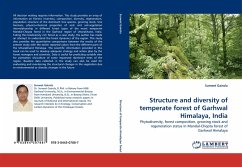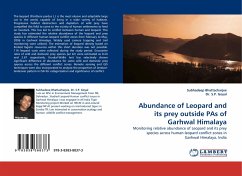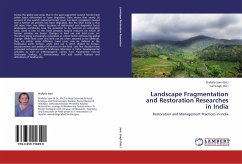
Ecological Analysis of A Sacred Landscape in Garhwal Himalya, India
An interdisciplinary study
Versandkostenfrei!
Versandfertig in 6-10 Tagen
32,99 €
inkl. MwSt.

PAYBACK Punkte
16 °P sammeln!
With population growth and economic development in the Himalayan regions, issues related to land degradation, biodiversity loss, declining soil fertility and agricultural productivity, and socio-economic imbalance are becoming critical environmental problems with implications on a local as well as global scale. Knowledge on the dynamics and patterns of institutions linked to natural resource management and land use practices are vital to answering questions related to long term sustainability of human-nature interactions and conservation of natural resources. The book is an attempt to look at ...
With population growth and economic development in the Himalayan regions, issues related to land degradation, biodiversity loss, declining soil fertility and agricultural productivity, and socio-economic imbalance are becoming critical environmental problems with implications on a local as well as global scale. Knowledge on the dynamics and patterns of institutions linked to natural resource management and land use practices are vital to answering questions related to long term sustainability of human-nature interactions and conservation of natural resources. The book is an attempt to look at the ecological, social and cultural interconnections underpinning natural resource management by traditional mountain societies of the central Himalayan Garhwal region. The results presented are significant for developing management policies for sustainable development of the region.












